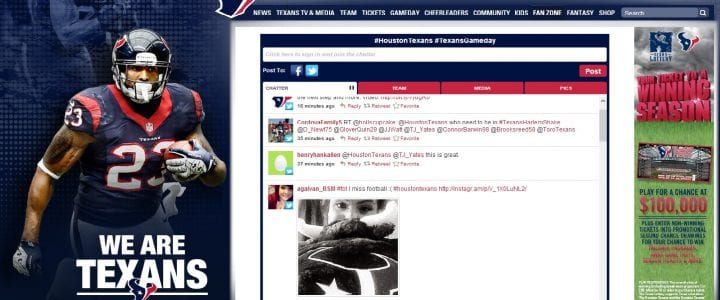
by Travis Martin – June 2013
Kelly Roddy is President of Schlotzsky’s, a founding partner of the S3 Report.
Leadership Challenge: Revitalizing the brand
S3 Report: Since assuming leadership at Schlotzsky’s, what has been your greatest challenge as a leader?
Kelly Roddy: After joining Schlotzsky’s in December 2007, it was clear the brand needed a makeover. Just like every sports franchise, restaurant franchises must evaluate where the brand stands in the minds of those in their respective markets.
S3 Report: What was the issue?
Kelly Roddy: Our research showed that we were no longer relevant with our customers and we needed a new look. Relevance is an important brand asset that influences overall brand value.
We are an established, well-known brand in our markets, but it was time for a change. I knew as a leader I had to guide Schlotzsky’s through a brand make over, but there were multiple challenges. I had to figure out how to quickly lay out the plan and then how to get a franchise system of more than 350 restaurants to embrace the idea.
When we began the economy was struggling and convincing our franchise partners to invest dollars into re-image was a difficult task.
S3 Report: How did you tackle the challenge?
We held tight to the rule, “Make new friends, but keep the old.” We didn’t stray far from our roots, so we stayed true to the product that brought us success. And through our planned program, our makeover paid off. We began with three very basic steps; easy in concept, not so easy in practice.
1. Pay attention to consumer trends
It’s crucial to understand consumer needs and trends and be willing to make changes to meet those needs and get ahead of the trends. This can be a struggle for a national company, particularly a franchise system, but it allows for an opportunity to build relationships with consumers and establish a level of trust with them that you’re building your business with the consumer in mind.
[dropshadowbox align=”center” effect=”lifted-both” width=”650px” height=”” background_color=”#ffffff” border_width=”1″ border_color=”#dddddd” ]S3 Report: True. Sports teams must pay attention to trends like these:
- Digital in-game experience: More fans are accessing second and third screens while attending or watching sporting events.
- Gamification: the attention span of consumers continues to shorten, so sports and entertainment providers must find ways to incorporate game mechanics into their websites and social media (See related examples, such as the LA Kings, here: sports trends.)
- Augmented reality/fan engagement: Teams (e.g., the Eagles) are among those adding features such as highlights, previews, player messages and stats to fans using smartphones to scan tickets. (See this Mashable article for other examples.)[/dropshadowbox]
2. Develop a clear brand strategy
While going through massive changes, it’s imperative to maintain the core of your business, but change enough for consumers to take notice.
We knew our product wasn’t the issue; it was the perception of the product. We needed to change our look and freshen up our restaurants while staying true to what our guests keep coming back for – our food.
[dropshadowbox align=”center” effect=”lifted-both” width=”650px” height=”” background_color=”#ffffff” border_width=”1″ border_color=”#dddddd” ]
S3 Report: Perception is reality, so in the same way teams should track customer perceptions of their brands to evaluate the need for revitalization.
[/dropshadowbox]
3. Spend wisely
Rebranding is a major company decision. It becomes an even bigger decision with a struggling economy. Spending wisely is important, because the last thing you want to do is nothing at all. We knew we had to invest so we could emerge from the recession a stronger, refreshed brand, which is exactly what we did.
[dropshadowbox align=”center” effect=”curled” width=”650px” height=”” background_color=”#ffffff” border_width=”1″ border_color=”#dddddd” ]
S3 Report: That strategy confirms what we know from the historical evidence during downturns.
Firms that budget marketing as a percent of sales during downturns follow a self-fulfilling prophecy. Sales go down and marketing goes down; because marketing is down, then sales go down more…and the cycle keeps going. In contrast, firms that invest boldly (and wisely) in marketing during downturns far outdistance themselves from competitors who have all cut budgets.[/dropshadowbox]
Conclusion
S3 Report: As you look back, what were the major changes you made to the franchises?
Kelly Roddy: Re-branding is never easy, recession or not. But, a franchise does not have to be a casualty of its own making or even its own inertia.
Our re-image ensured our franchise partners thrived, just as teams want their fans, sponsorship partners and the community to thrive.
Through innovative new menu items such as fresh-made salads and Cinnabons and a new service model in which we delivered food to tables, we changed more than just our look. We changed the perception of Schlotzsky’s.
Sports franchises must do the same. In fact, you might start by adding one of our Cinnabon, Carvel, Seattle’s Best or Auntie Anne’s brands at Focus Brands to your menu mix!
It was a tremendous challenge that required dedication not only from me, but the leadership in our brand and the entire franchise system. Through research and strategic planning, we updated the Schlotzsky’s brand and became a relevant, in-demand franchise.




 Senior Manager
Senior Manager